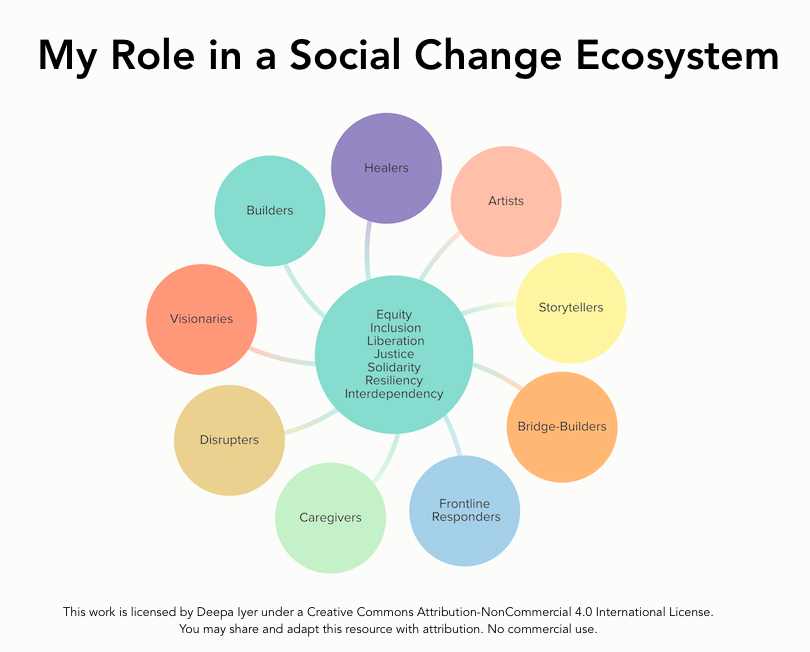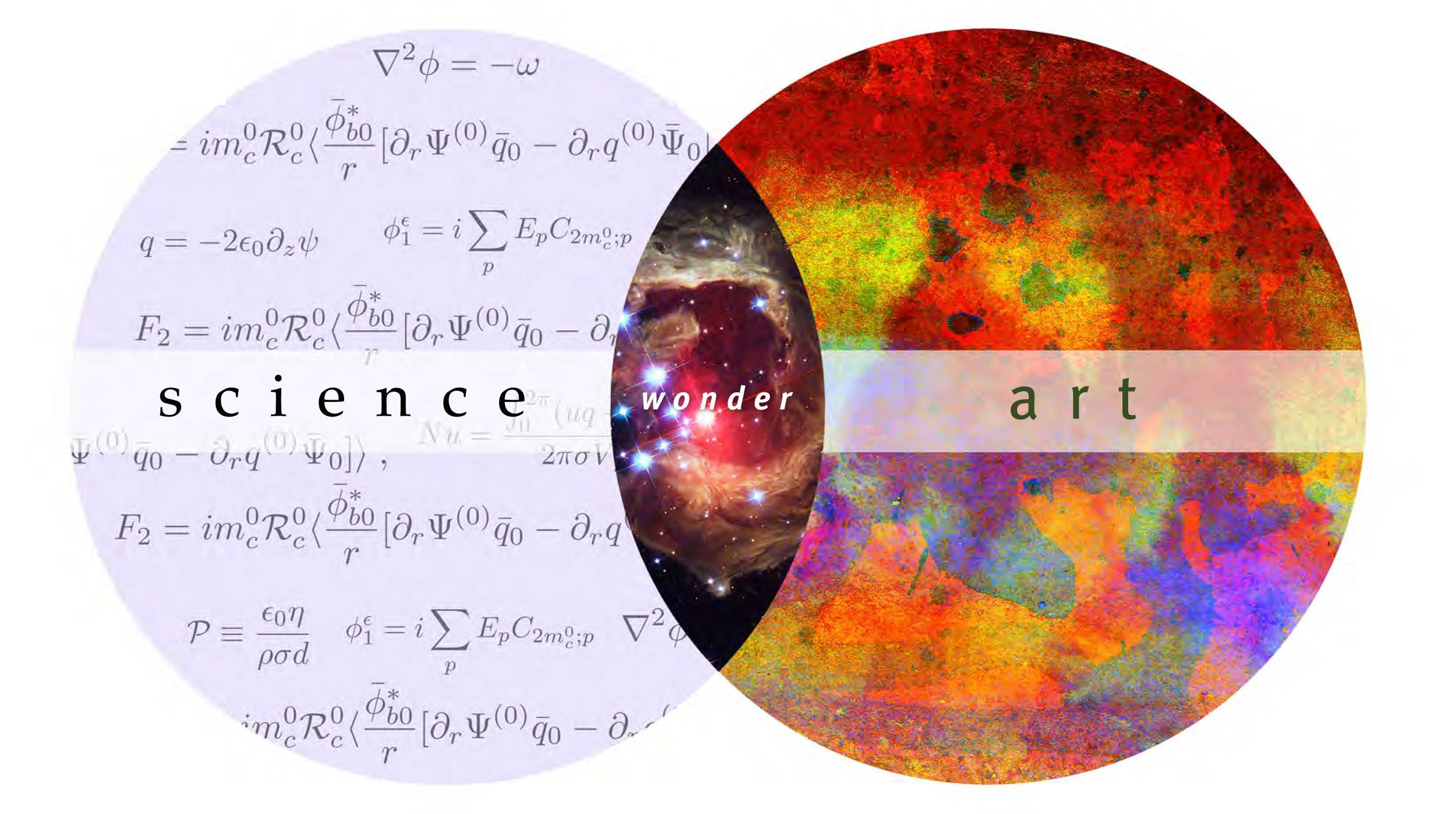DEI at the intersection of thinking as an artist and scientist
Cover photo by AmritPhotography, (my talented sister).
Art and science are disciplines that are often held as polar opposites. When applying to university I had a challenging time deciding on whether I should send my application to the Faculty of Arts, Commerce or Sciences. As a writer, poet and painter, I was drawn to the arts and explored my world through emotion, creative expression and story-telling. As an analytical thinker, I appreciated data-informed findings and objectivity that is present when we reserve conclusions until we test and learn. I ended up taking courses that spanned across many disciplines, exploring in studios and learning in labs. Both fields require insurmountable curiosity, imagination and the courage to wonder “Is it possible?” and “Wouldn’t it be cool if?”
Speak with any group of Diversity, Equity and Inclusion (DEI) practitioners and you’ll find that there is no linear journey to the field. The space is occupied by humans from various backgrounds, including legal, social work, organizing, communications, education, health care and business. Some practitioners may not have traditional or formal educational training and degrees from universities, rather their lived experiences have positioned them with first hand expertise of systemic barriers, making them true experts of exclusion, and thus the most critical voices to center for solutions. All disciplines are needed and all industries are called on, because social change requires each of us. Without any one of us, the progress will be fragile and brittle.
We all have a role to play in pursuit of equity, liberation, inclusion and justice. There is a framework by Deepa Iyer that illustrates various roles in an effective, healthy and sustainable social change ecosystem and it demands different actors to carry out these roles, at different times. This outlook resonates with my own. I believe DEI work can make exponential progress and reach ultimate scale and pace, when we have practitioners from all sectors sharing resources and promoting equitable decision making across their spheres of influence. This work is interdependent, interdisciplinary, and intersectional. I appreciate that this field is blurring silos, promoting collective decision making, and demonstrating the power of open-source knowledge to generate the most resilient ideas and holistic solutions. There is so much we can learn from one another about building more cooperative and collaborative worlds.
photo credits: Ontario Science CenterDiversity, Equity and Inclusion, has become more prominent in Corporate America since 2020, and has frequently been attributed as a branch of Human Resources (HR) and something that we must navigate in a world of schedules, budget and organizational operations. I believe a DEI mindset requires us to think a little less like an entrepreneur, and rather dream and think more like artists and scientists, tapping into our innate creativity, curiosity and play, to radically envision and produce a more liberatory world.
When we think like artists, we embrace the messy, imperfect, complex and unstructured. We make connections, feel emotions and are comfortable being in a state of ambiguity. Humans are multi-faceted and fluid. Systemic inequity issues have roots that are intertwined by various societal, economic and environmental factors. Being able to take a macro-view of the full picture, while being able to zoom in to each brush stroke and notice the various colours and textures, is critical for being able to understand how the sum of the parts impacts the wider outcomes.
When we think like scientists, we start with big, exploratory questions. Questioning what we know and being present to the world around us so that we can make detailed observations, find answers, and question our answers. Engaging as a scientist inspires us to exercise curiosity, ask critical questions (especially the uncomfortable ones), and be in a constant stage of learning. It urges us to let go of what we may have once believed to be true in light of new information that is in opposition to the current state of knowing. Truth-telling and truth seeking are imperatives as science is the pursuit of truth. Resisting the pressure to be agreeable when it conflicts with the honest truth, is a tension that DEI practitioners often face. Many DEI practitioners have lost jobs, contracts or reduced their social likeability which can impact their ability to be promoted or have access to opportunities, a real threat to one’s livelihood and security. And yet, like many scientists who have continued to publicly voice environmental and public health issues, DEI leaders continue to advocate for, and amplify issues despite resistance among those who are committed to denial and misunderstanding.
This image/chart is not an exhaustive and absolute list. It outlines some of the ways that I see DEI work being transformed and embraced at the intersection of thinking, wondering and creating as artists and scientists. In the iconic words of Leonardo DaVinci “Study the science of art. Study the art of science. Develop your senses - learn how to see. Realize that everything connects to everything else.” As we explore systems thinking and the ways in which change in one part of a system impacts many others, and that liberation of oppressed groups requires us to interrogate the ways that all and many struggles are intimately connected, we must broaden our thinking and reimagine our work within organizations. What if instead of operationalizing DEI into all existing structures we re-operated how we build, research, or design? What if we took a more interdisciplinary approach when solving for equity issues? This is not a reframe and expansion of thinking for those who formally and professionally practice DEI, but for all people who are seeking ways to integrate equity work into their day-to-day work, the very skills you are seeking may be ones you already possess and can lean into as you do your craft through the most equitable and inclusive way possible.
Resources: Art thinking - Amy Whitaker; Steal like an Artist - Austin Kleon; Octavia's Brood - Adrienne Maree Brown & Walidah Imarishajournal entry: 2010: letter to young minds on holding imagination
People will tell you things that they know, they will tell you answers you do not wish to hear—like God or Santa Claus is not real but you have a choice, and you always have a choice. You can know, and believe otherwise. They can tell you the clouds are made from vapors, and evaporation, and use words too big for you to understand, and you can shake your head, and dream of people cutting out cardboard sheets, and gluing down cotton balls, and strings longer than your arms, swaying them like the curtains on your window during storms. They can tell you the sky is blue because of gases in the atmosphere, because of light reflections, and high percentages of blue in the spectrum, but you can tell them it’s blue because it longs for the ocean, it loves the waves so dearly—but its love is unrequited, for the sea throws itself up the shore, reaching for the mountain peaks that it yearns to envelope. They can tell you that the trees shed their leaves in autumn, and you can believe they’re crying their orange crackle tears, their skin chasing the birds who are chasing summer, pleading with the wind to blow them as far as they can go. People can teach you many things, we have books and papers, and research that proves what is what—but we cannot teach you to dream, we cannot teach you to believe in your beliefs, and stand by your convictions. This letter only urges you, listen to their voices, listen closely and carefully, listen to how they say such things and how their lips curl with the words—but always remember, beauty in the world does not need a certainty. It doesn’t not need ink and paper, telling you so. You can make the world up, and change every tiny thread as you go.
They told me at a young age, Santa isn’t real, but every year when the sky cries in white tears, I find presents snuggled under the tree with winter’s dew. Maybe Santa doesn’t have to be red and big-bellied. Maybe his character got lost somewhere in the passing of pens, and he got written down wrong. Doesn’t that happen sometimes? Ink embeds itself too deep for change.
Growing up they had answers for me, but none to the questions I ask. I want to know how a heart that they say weighs 200 grams, can feel as heavy as it does. How the same broken heart, can still manage to hold in so much pain. I want someone to point me towards my soul, so I can hold it between my fingers, feel that it is real.
I keep that picture of the strings and the clouds in my head when there are storms and the white puff turns grey and angry. Somehow it makes me think that the things that are blowing away our homes, and keeping fear in our hearts, are the very things people glued together with their own fingers, and that makes me sad.
The leaves are my promise. Just like the sun, they fly away, but always flutter back, sometimes more vibrant, more happy. Just like nothing else. And so I don’t think it’s fair to name them that. I call them windwhisperers.




